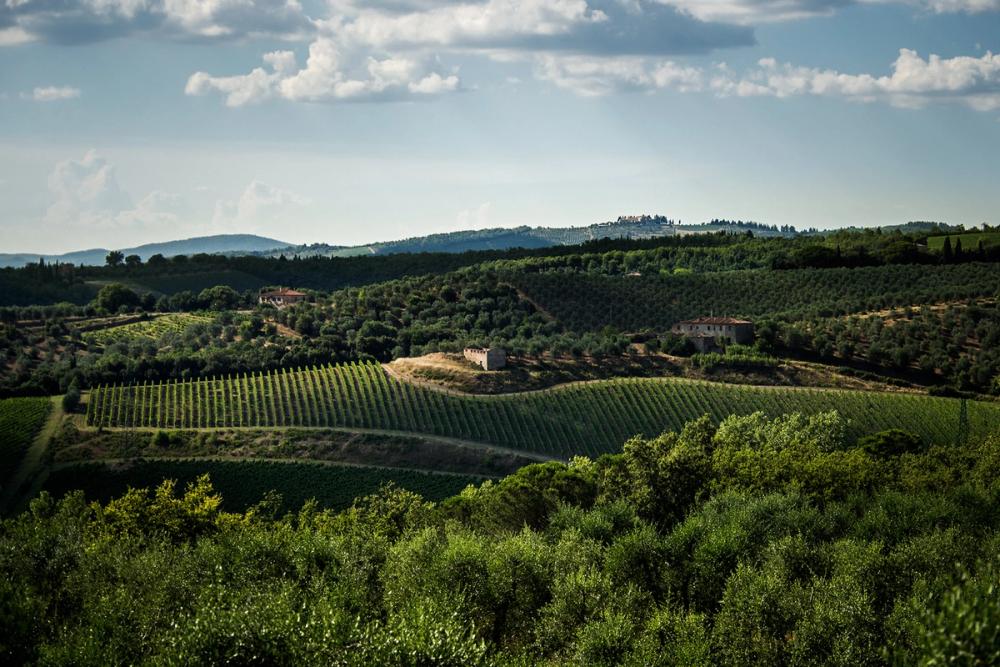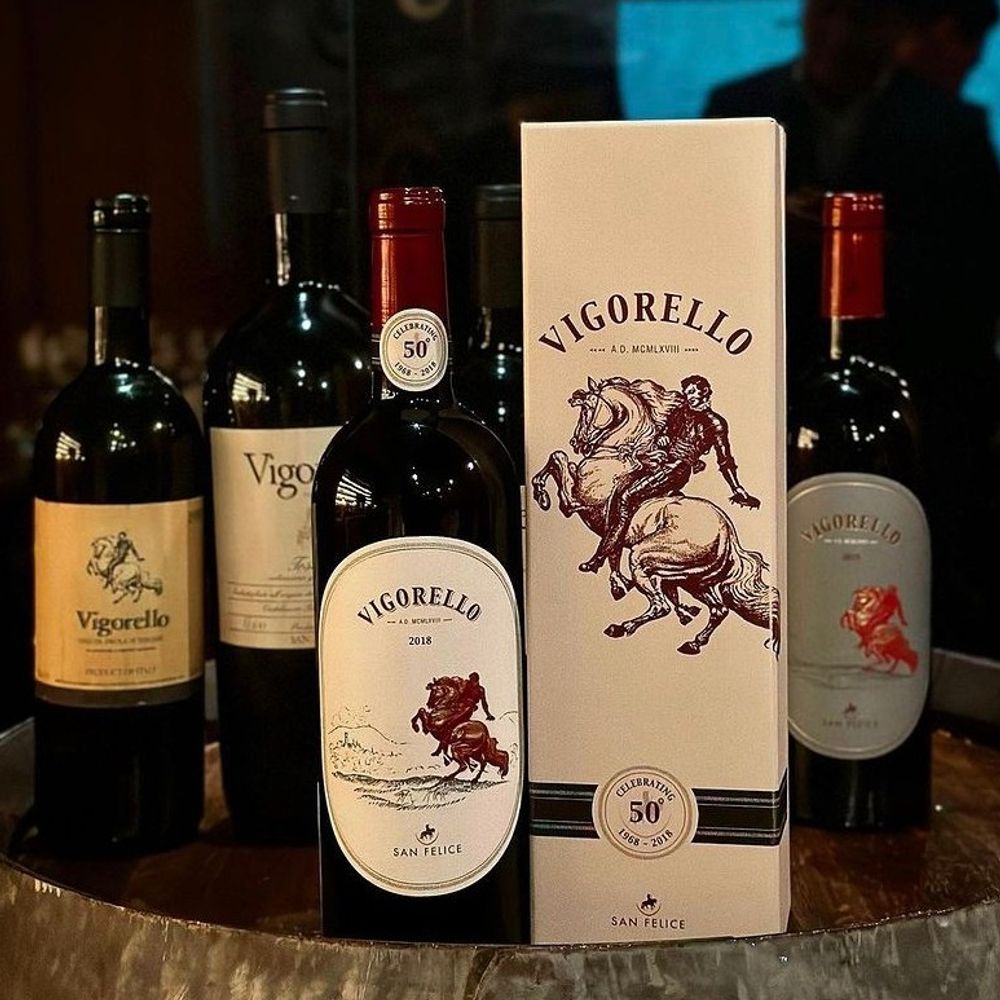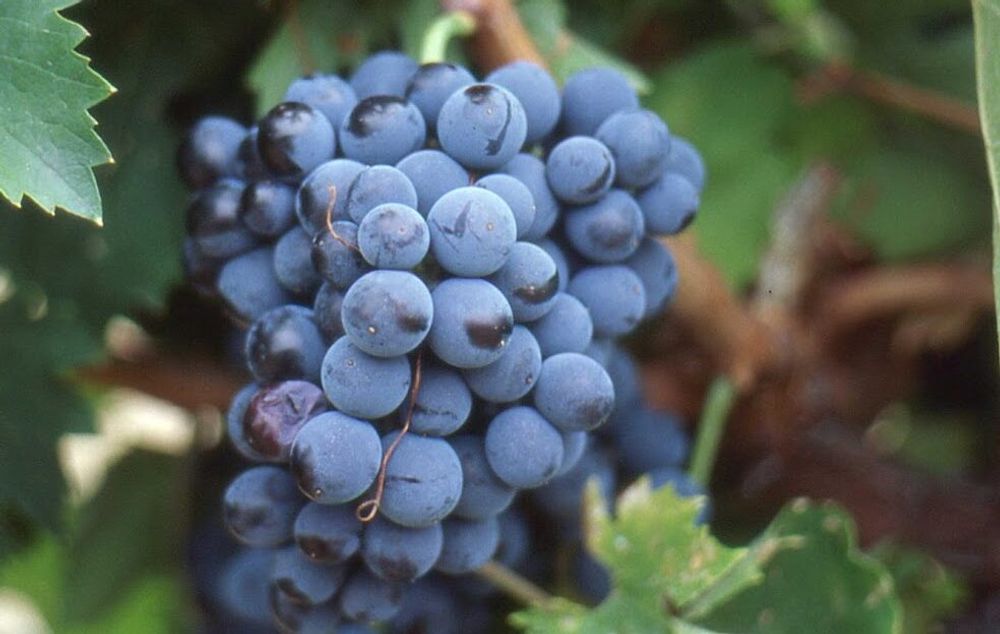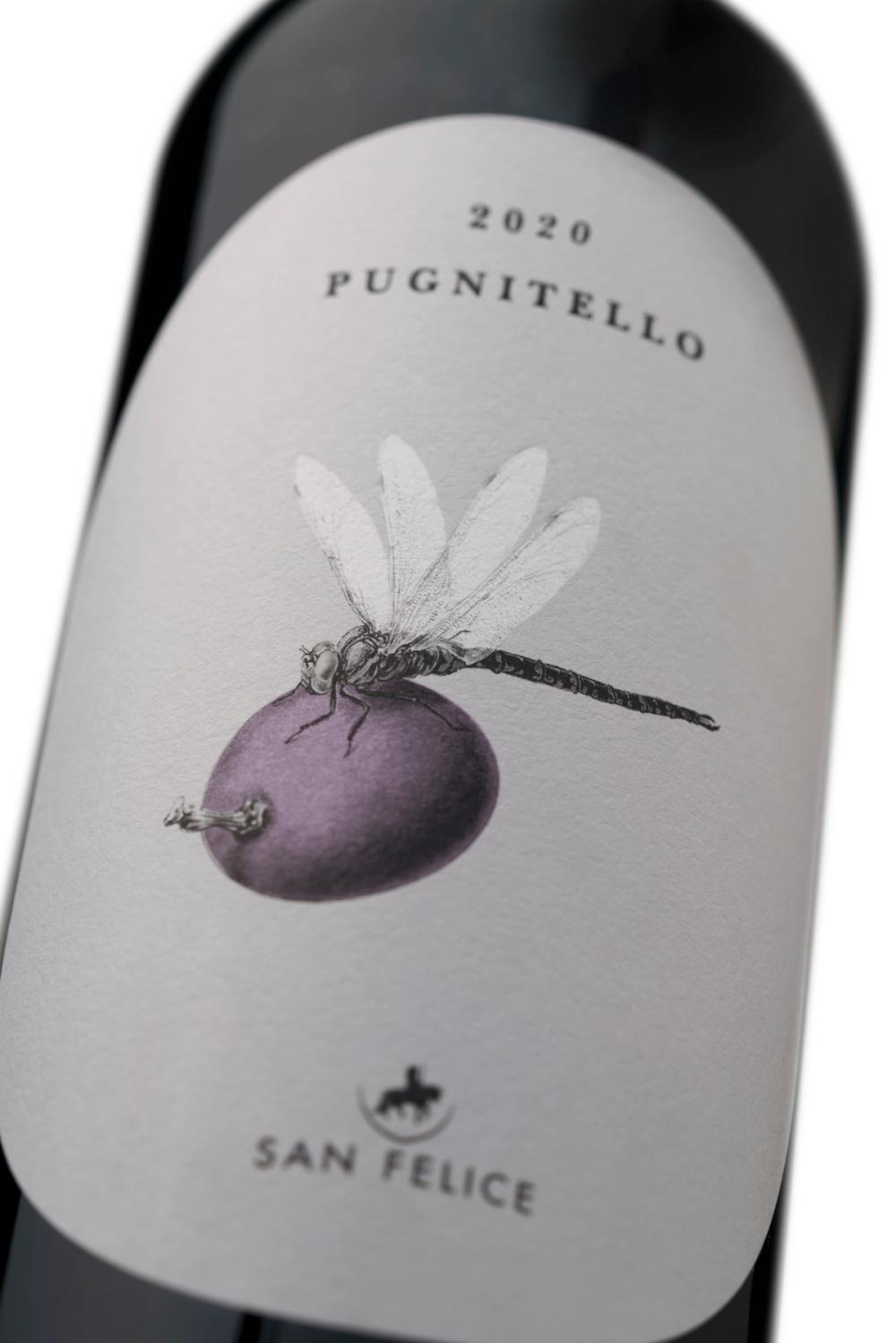“Given the challenges of global warming, this is bound to be a crucial factor for Pugnitello to truly shine,” writes De Pasquale.

San Felice is a 685 hectare estate just a few kilometres from Siena with 188 hectares planted to vine
In 1986, after gathering a selection of near-extinct and forgotten grape varieties in Tuscany, the University of Florence enlisted the assistance of a Chianti winery. Their collaborative efforts were directed towards establishing an experimental vineyard aimed at preserving these grape varieties.
The winery they chose is San Felice, and the individual overseeing the project is winemaker Leonardo Bellaccini, currently serving as its technical director. He joined San Felice in June 1984, and last year marked his 40th vintage with the winery.
According to Bellaccini, during that era, San Felice consented to the experimental vineyard project primarily to “satisfy the university,” as the focus in 1980s Chianti was predominantly on esteemed international grape varieties like Cabernet Sauvignon and Merlot. Bellaccini, much like others, confesses that he initially overlooked the modest vineyards, devoid of grapes, until 1990 when a handful of grape bunches finally captured his attention.

Winemaker Leonardo Bellaccini, originally chose to work with Pugnitello as a grape that could support Sangiovese
He handpicked 30 promising varieties from the vineyard and conducted micro-vinification for each. It was reminiscent of a vinous version of ‘The X Factor’ for these 30 grapes, with the most impressive contender earning a coveted prize. In Bellaccini’s judgment, the victor was Pugnitello, translating to “little fist” in Italian, and the reward was to be grafted into a thousand rootstocks. Three years later, the inaugural three barrels of Pugnitello wine unveiled promising and exciting results.
Bellaccini reflects, “During that period, the pivotal attributes we sought in these experimental varieties were rich colour, substantial size, and a robust structure. However, their role needed to be one of support to Sangiovese, rather than stealing the spotlight.” This imperative arose due to the prevalence of inferior Sangiovese clones in the late 20th century, resulting in Chianti wine possessing a notably pale hue. Pugnitello emerged as the ideal choice, meeting all criteria with its small bunches, thick skin that produces wine with a deeper colour minus harsh tannins, and a profile without too many distinctive elements that could overshadow Sangiovese.

Vigorello, marked the dawn of Supertuscans in 1968. Starting as a pure Sangiovese, it has evolved with Pugnitello now replacing the Sangiovese in the blend.
Pugnitello has evolved from a supporting role alongside Sangiovese to claiming the spotlight, currently standing as San Felice’s second most planted grape variety after Sangiovese. Bellaccini illustrates this transformation using the example of Vigorello, initially conceived as a Super Tuscan wine with 100% Sangiovese in defiance of regulations.
“Since 1979, we incorporated 10% Cabernet Sauvignon to Vigorello, gradually increasing to 40% over the years. Merlot (15%) joined the blend in 2001. However, when the 1996 regulations permitted Chianti Classico to be crafted with 100% Sangiovese, we reserved the highest-grade Sangiovese for our Chianti Classico Riserva and Gran Selezione,” explains Bellaccini. As for the substitution of Sangiovese in Vigorello, he adds, “To preserve the Tuscan essence in our wine, we replaced Sangiovese with Pugnitello in 2011.”

Pugnitello: small bunches, and thick skins that helps produce wine with a deeper colour minus harsh tannins
For Bellaccini, the future of Pugnitello looks promising. While San Felice plays a pivotal role as its discoverer and advocate, they are not alone. Currently, approximately 20 producers in the region recognise its potential, forming a “Pugnitello Community” that organises regular tastings and events. San Felice leads with 12 hectares of Pugnitello, making them the largest contributor.
“This grape is remarkable, with exceptionally low yields, making it exclusively suitable for crafting high-quality wines. Despite its alcohol content typically reaching 14-14.5% ABV, it retains its acidity. Given the challenges of global warming, this is bound to be a crucial factor for Pugnitello to truly shine,” concludes Bellaccini.
Wines with Pugnitello that should be on your radar:

San Felice Pugnitello, Toscana IGT 2019
Pugnitello 100%
The wine is velvety and concentrated, boasting a rich aroma of cinnamon, cedar, mixed berries, and tobacco leaves. Well-structured yet smooth on the palate, it mirrors these enticing fragrances and finishes with dense fruit characters.
Vigorello, Toscana IGT 2019
Pugnitello 35%, Merlot 30%, Cabernet Sauvignon 30%, Petit Verdot 5%
A lush and complex nose of blackberry, red cherry, and sweet spice. Warm and rich on the palate, with very structured tannins balanced by refreshing acidity.
San Felice, Chianti Classico DOCG 2021
Sangiovese 80%, Colorino 10%, Pugnitello 10%
San Felice’s entry-level Chianti Classico offers great value for money. The nose is quite perfumed upon entry, with a lovely sweet spice note and crunchy red berry fruit. Fresh acidity rounds up the supple tannins, making it a delicious house wine.
San Felice Il Grigio, Chianti Classico Gran Selezione DOCG 2019
Sangiovese (80%), Pugnitello, Abrusco and Malvasia Nera
San Felice pioneers the “Gran Selezione” category, utilising exclusively the grapes from its own vineyard. In addition to Pugnitello, they incorporate Abrusco, a native grape akin to Colorino, known for its rich colour and spicy notes. The wine presents a complex nose of tobacco, blackberry, and plum with a floral hint. It is full-bodied, featuring well-balanced spicy oak, refreshing acidity, and a lingering finish.
San Felice wines are imported into the UK by Boutinot Wines.
































